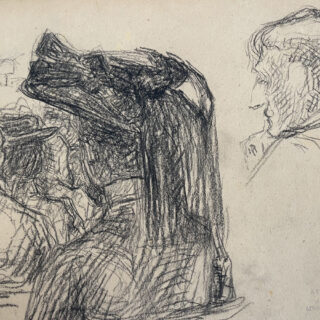Jean Marchand (1883-1941) was a French painter of landscapes, figures, still life and occasional large decorative compositions as well as being an illustrator and engraver.
He was born in Paris and studied part-time at the Ecole des Beaux-Arts, 1902-6, under Bonnat and L.-O. Merson. He supported himself by designing textiles, jewellery and other applied art. In 1909 he studied for several months at the Academie Vitti under Henri Martin. Marchand experimented with Cubist stylisation and even occasionally with Futurist multiple images, but never departed far from a basically naturalistic, post-Cezannesque style. He exhibited in 1912 at the Salon de la Section d’Or, and although his work was largely interrupted by war service, he had his first one-man exhibition at the Carfax Gallery, London, in 1915. He also exhibited in the Salon d'Automne and Salon des Independants, and his work was included in exhibitions organised by Roger Fry in London which led to his inclusion into the Bloomsbury circle. He visited Russia in 1912, followed by Syria and the Middle East in 1928, and painted decorative panels for the Syrian pavilion at the Colonial Exhibition at Vincennes in 1931. He worked frequently in the South of France at Céret, Cagnes, and Vence. He also illustrated various books with woodcuts or lithographs, including Claudel's Le Chemin de Croix (1918) and Valery's Le Serpent (1927).





